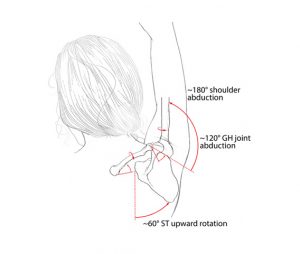
Gratitude
How to read this book
Preface
Foreword
Summary of key concepts
VOLUME 4: THE UPPER BODY
Chapter 1: Overview of the upper body
Bones of the upper body
Muscles of the upper body
Fascia of the upper body
Nerves and neurodynamics
Movements of the upper body
Overview summary
Chapter 2: The shoulder complex
Form: The architecture of the shoulder complex
Bones and cartilage
Joints and ligaments
Muscles of the shoulder complex
A biotensegrity view of the shoulder complex
Function: Application in yoga postures
Movements within the shoulder complex
Normal ranges of motion of the whole shoulder complex
Skeletal variations’ effect on poses and postures
The shoulder complex in yoga postures
Shoulder pain and pathologies
The shoulder complex summary
Chapter 3: The elbow and forearm
Form: The architecture of the elbow and forearm
Bones and cartilage
Joints and ligaments
Muscles of the elbow and forearm
Function: Application in yoga postures
Normal ranges of motion
The elbow and forearm in yoga postures
Elbow pain and pathologies
The elbow and forearm summary
Chapter 4: The wrist and hand
Form: The architecture of the wrist and hand
The bones of the wrist and hand
Joints and ligaments
Muscles and tendons
Function: Application in yoga postures
Normal ranges of motion
The wrist and hand in yoga postures
Wrist and hand pain and pathologies
The wrist and hand summary
Volume 4: Summary
Appendix: Myofascial meridians of the upper body
Endnotes
VOLUME 5: ASYMMETRIES AND PROPORTIONS
The power of symmetry
The allure of perfect proportions
Aesthetics versus function
Chapter 1: Asymmetries
Categorizing the types of asymmetries
Asymmetry of the legs
Asymmetry of the pelvis
Asymmetry of the spine
Asymmetry of the shoulders
Asymmetry of the arms
Summary: The myths and misunderstandings about symmetry
Chapter 2: Proportions
Torso to legs proportions (the Cormic index)
Intra-limb ratio for the leg
Arm-to-torso proportions
Humerus to head and neck proportions
Intra-limb ratio for the arm
Arm span to height proportions
Summary: The importance of proportions
Volume 5: Summary
Endnotes
Index
SIDEBARS
IT’S IMPORTANT
The flaw of averages
Stability and the close-packed position of the joints
Our internal rotator muscles are much stronger than our external rotator muscles
Allow your palms to face in the direction your arms are moving
Allow the arms to abduct in the scapular plane
Active versus passive ranges of motion
Are you a member of the 180° club?
Your carrying angle will affect your hand positions
When bearing weight in the hands, pronate!
Teaching children how to differentiate clockwise from counter-clockwise
Pronate to push; supinate to pull
Reviewing pronation and supination
There are three ways to turn the hands outward
Notice when alignment cues are inconsistent in their logic
Reconsidering symmetry
It is okay to work your right and left sides differently
For golfers: A personal story of asymmetry
Babies and children are not miniature adults!
IT’S COMPLICATED
Statistics
Deep fascia of the upper body
Scapular movements are complex!
Other variations of the scapula
Parameters of the humeral head
Bursae and articular discs
Variations in the muscles of the shoulder complex
Closed-chain versus open-chain exercises
A different paradigm for ligaments and tendons
The collateral ligament complexes and annular ligaments may not exist
A larger olecranon increases the triceps brachii moment arm
The axis of rotation for pronation and supination
Closed-chain hands on the floor change everything!
Variations in the distal ulna
Leonardo da Vinci’s perfect proportions
The many definitions of asymmetry
It is not easy to determine leg length differences
Variations in the Cormic index
NOTE TO TEACHERS
Helping your students determine their ranges of external and internal rotation of the arms
It is okay to let the shoulders rise during arm elevation
Don’t over-focus on where the hands are
Where the eye of the elbow faces is only relatively important
What to say to a student whose arm is not straight
Cueing the hands in Down Dog (Adhomukhasvanasana)
How to estimate your students’ leg length difference
It is okay to ask students to play around with their asymmetries
Allow the arms to be wider to increase arm flexion